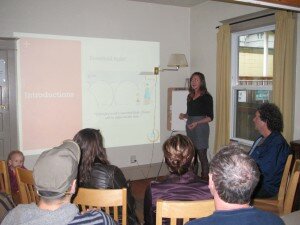You’re ready! You’ve got a great idea for a volunteer project that can help your community. You’ve gotten a nonprofit partner (or you are a nonprofit), and you have a plan for having the project be more than just a one-shot project. You’re ready to do something.
Before you sit down to think up a task list, remember some of the preparation tasks that need to be done to make sure you have an awesome volunteer project.
Assess the situation
Typically, project planning starts with a needs assessment. Your most effective projects will emerge where several components come together, including an assessment of needs, opportunities and resources. Once you know the project’s needs, then you can sort out the options and choose a focus.
A needs assessment can be as simple or complex as you choose to make it. You can
- Do a community walk to see the neighborhoods where your project will take place and talk to residents and business owners.
- Interview community leaders, agency staff and other residents.
- Conduct a survey in the community or at a local school to help find direction for your project.
- Host community forums or town meetings to talk about visions and priorities for the community.
Set priorities
It is likely you will be able to identify dozens of needs. Getting people together to brainstorm freely is an important first step. The goal is to identify the effort that would best match the needs, resources, readiness level and hoped-for outcomes of everyone involved.
With time and creativity, you will have innovative ideas that get everyone excited.
Link the project to the community
Before moving into the details of planning, take time to flesh out the project objectives for everyone involved.
The service provided may appear to be the same whether or not you make strong community connections, but the impact is quite different. When community members have a voice in guiding the project’s direction, they’re able to contribute their knowledge of what their community needs help in achieving. With community input, the impact of the project can be longer lasting.
Recruiting volunteers
Recruitment volunteers can be a difficult, but working with a nonprofit partner can make things easier. Use traditional networks to find and recruit volunteers, and branch out to digital resources like the Make A Difference DAYta Bank to make your project visible to a digital audience.
Once you’ve recruited your volunteers, don’t forget to have a volunteer orientation so that volunteers have a good idea of what they’ll be doing and how to do it.
Have you planned your own volunteer projects? Let us know what tips you have in the comments!

 Do you want to create an impact in your community? Do you see a need that isn’t being met and want to act to fix it? Do you want to inspire and move people to act with you?
Do you want to create an impact in your community? Do you see a need that isn’t being met and want to act to fix it? Do you want to inspire and move people to act with you? Brainstorming
Brainstorming Effectively evaluating your volunteer program is important to ensuring the completion of your organization’s service goals. Evaluations can be done as often as necessary, but they should be a part of your volunteer program.
Effectively evaluating your volunteer program is important to ensuring the completion of your organization’s service goals. Evaluations can be done as often as necessary, but they should be a part of your volunteer program. evaluation, whether or not the program is supporting the organization’s goals.
evaluation, whether or not the program is supporting the organization’s goals.
![06.22.10.Group shot[small]](/wp-content/uploads/2010/06/06.22.10.Group-shotsmall-300x190.jpg) The idea of planning a volunteer project can be daunting! With all of the step involved, be sure to take time to visit the potential project site to determine the greatest needs. Whether you are working at a shelter, a park or a community service organization, a site visit will help you identify potential projects and ensure your project runs smoothly.
The idea of planning a volunteer project can be daunting! With all of the step involved, be sure to take time to visit the potential project site to determine the greatest needs. Whether you are working at a shelter, a park or a community service organization, a site visit will help you identify potential projects and ensure your project runs smoothly. As a volunteer manager, it is important to keep your volunteers up-to-date and in the loop with important information regarding your organization. Communication is also a key step to project management and it should be an essential step in every service project planning steps. What is the best communication strategy for your organization?
As a volunteer manager, it is important to keep your volunteers up-to-date and in the loop with important information regarding your organization. Communication is also a key step to project management and it should be an essential step in every service project planning steps. What is the best communication strategy for your organization? market itself at a low cost, which will help your organization attract a new audience.
market itself at a low cost, which will help your organization attract a new audience.
 is essential to the success of your project. Make sure that you make this step a priority within your organization. As you can see there are many different communication tools that your organization can use that do not cost a great deal of money. It is important for your organization to choose a communication tool that will fit your organization’s style.
is essential to the success of your project. Make sure that you make this step a priority within your organization. As you can see there are many different communication tools that your organization can use that do not cost a great deal of money. It is important for your organization to choose a communication tool that will fit your organization’s style. Recruiting volunteers is the first step to a successful volunteer program within your organization. Training your volunteers to be an effective part of your organization is equally important.
Recruiting volunteers is the first step to a successful volunteer program within your organization. Training your volunteers to be an effective part of your organization is equally important. and weaknesses.
and weaknesses.

 According to a 2011
According to a 2011  program is to identify which business objectives can be achieved through the actual program efforts. These priorities can be identified in a mission statement. Let employees and outsiders know that volunteering is an important aspect of the overall business of your company or organization. You can better tailor your volunteer interests by studying your current mission statement and matching it to a philanthropic mission.
program is to identify which business objectives can be achieved through the actual program efforts. These priorities can be identified in a mission statement. Let employees and outsiders know that volunteering is an important aspect of the overall business of your company or organization. You can better tailor your volunteer interests by studying your current mission statement and matching it to a philanthropic mission. Developing an employee volunteer program will not only benefit your community, but it will also generate a more positive workplace for all involved. Get your employee volunteer program started today to see the many benefits that will come!
Developing an employee volunteer program will not only benefit your community, but it will also generate a more positive workplace for all involved. Get your employee volunteer program started today to see the many benefits that will come! nteers is an unrealistic goal.
nteers is an unrealistic goal. are able to serve again. Keep in touch with them to let them know that you care about their well-being.
are able to serve again. Keep in touch with them to let them know that you care about their well-being.
 mean more because they are not paid to give it.
mean more because they are not paid to give it.
 It is important to provide inclusive projects for both your volunteers and your staff members to guarantee retention. When volunteers feel their work is both meaningful and fulfilling, they are more likely to return.
It is important to provide inclusive projects for both your volunteers and your staff members to guarantee retention. When volunteers feel their work is both meaningful and fulfilling, they are more likely to return. Summer vacation is here, that means it is time to volunteer! Whether you are an individual wanting to volunteer, or a family, summer is the perfect time to introduce community service into your life. Why? Summer means great weather, better moods, and less hectic schedules. It is a great time to be outside being proactive in your community or inside enjoying the air conditioner and helping your neighbors.
Summer vacation is here, that means it is time to volunteer! Whether you are an individual wanting to volunteer, or a family, summer is the perfect time to introduce community service into your life. Why? Summer means great weather, better moods, and less hectic schedules. It is a great time to be outside being proactive in your community or inside enjoying the air conditioner and helping your neighbors.


 Individual and family volunteering makes a huge impact on the community. Employee volunteering will not only make an impact on the surrounding community, but also on the work environment. Employees who volunteer together will feel more connected to the community in which they work, and also closer to their coworkers.
Individual and family volunteering makes a huge impact on the community. Employee volunteering will not only make an impact on the surrounding community, but also on the work environment. Employees who volunteer together will feel more connected to the community in which they work, and also closer to their coworkers. volunteer program started today!
volunteer program started today! employee committee who can dedicate themselves to greater participation. Develop written policies about employee participation in service events (i.e. how many project must staff members participate in). Learn best practices of employee volunteer programs so that you may implement them into your program.
employee committee who can dedicate themselves to greater participation. Develop written policies about employee participation in service events (i.e. how many project must staff members participate in). Learn best practices of employee volunteer programs so that you may implement them into your program.
 ntacting your local newspaper article. By reporting your results, the community will look more favorably at your company, and other companies may be more enthusiastic about starting a program of their own!
ntacting your local newspaper article. By reporting your results, the community will look more favorably at your company, and other companies may be more enthusiastic about starting a program of their own! the comments sections below!
the comments sections below!
